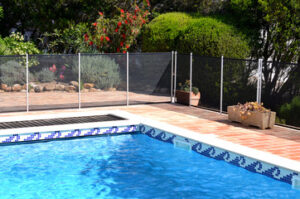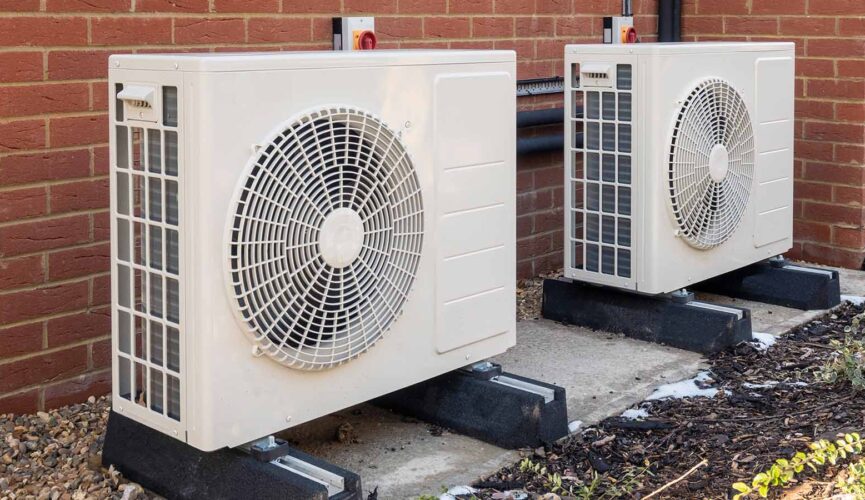There are several things that need to be taken into consideration when constructing pool fences. The most important of these is to ensure that it meets legal and safety standards.

Aluminum fencing is a good choice because it won’t rust or be weakened by pool chemicals. It also provides good privacy and is easy to set up.
There are a lot of choices out there when it comes to pool fences. While mesh and wrought iron are popular options, many other fence types can meet or exceed local fencing requirements.
One of the most popular choices is a wooden fence. Wooden fences are strong, sturdy, and allow for customization to meet the needs of the pool area while still meeting local requirements.
This type of fence has a traditional look that is both classic and appealing. Wooden fences are available in a variety of styles and colors to fit any aesthetic. The choice of color can make the fence stand out or blend in to provide a seamless appearance.
A common concern for pool owners is the amount of maintenance needed to keep a wooden fence looking good. However, this can be alleviated by using treated wood that is low-maintenance and resistant to damage from harsh weather conditions. Choosing the right type of stain can also help prevent fading and discoloration over time.
Another consideration is the amount of privacy that you want to have around your pool. Wooden fences are a great option for providing privacy since they can be built with taller designs that can hide people or objects from view. In addition, you can add landscaping or plantings to your wooden fence that will camouflage it from the rest of the yard. Adding a few evergreen trees or a row of hydrangeas to your fence can transform it into a natural-looking backdrop for the pool area.
Regardless of which type of fencing you choose, you should always remember that the primary purpose of any pool fence is to increase safety. Your fence should completely encircle your pool and make it impossible for children or pets to gain unsupervised access. The height of your fence should be high enough to deter children from climbing over the top or a side, and gaps in the bottom of the fence should not exceed 2 inches.
As you consider your options, make sure to consult with local authorities and pool professionals to ensure that you are selecting a fencing design that meets all requirements for your area. Then you can enjoy your swimming pool all summer long with peace of mind knowing that your children, friends, and guests are safe from the dangers of the water.
Picket Fences
Inexpensive picket fences can add a classic, charming touch to your pool landscape. They can be crafted of wood, vinyl, or another material and painted any color you desire. Wood fences are naturally durable and resist rot and insect damage. They’re also aesthetically pleasing, though they do require periodic staining or painting to maintain their appearance. Vinyl is a modern option that’s available in a wide range of colors and styles. It’s virtually maintenance-free, so it doesn’t require staining or painting like a wood fence.
If you prefer the look of traditional wooden fences, but would rather avoid potential problems with rot and insects, consider using a treated pine or cedar. While this may be slightly more expensive, it’s a long-term investment that will stand the test of time. Treated pine and cedar also have the benefit of repelling mosquitoes and other pests that could pose a threat to your family’s safety.
A more rustic and earthy choice is stone walls. The rugged texture of these walls adds a touch of natural beauty to any landscape. They can also craft a cozy pool enclave when paired with wooden deck chairs. You can also use rock fences to create a barrier that crafts a beautiful backdrop for your pool.
If stone walls don’t fit your landscape, you can opt for a brick pool fence instead. This style is a great alternative for homes with a more contemporary vibe and complements most types of brick surfaces.
While wrought iron is one of the most luxurious and elegant options, it’s also among the most expensive. Skilled blacksmiths can handcraft intricate designs, such as floral motifs and curlicue flourishes. For a more budget-friendly alternative, you can use iron-looking aluminum for your pool fence. This is an extremely durable material that offers the decorative flair of wrought iron at a more affordable price.
Unlike other types of fences, glass fences are completely transparent and allow uninterrupted views of your pool. However, this type of fencing can be a challenge because it requires constant cleaning to remove thumbprints and handprints. It’s also not as safe for small children, as they may easily slip through the gaps between glass planks.
Concrete Half Walls
Adding a concrete half wall to your pool fence can add a touch of style and elevate the space. You can use the wall as an accent to your landscape design or make it tall enough to serve as a privacy barrier. If your yard doesn’t have enough room for a full garden, you can plant greenery vertically on the walls of your fencing to create an aesthetically pleasing accent that also offers security. This is a great option for backyards with limited space that can still achieve the tropical getaway look of a pool.
A brick fence is another classic option for creating a beautiful and safe pool area. Whether you choose to install a brick fence half or full, it’ll blend seamlessly with your home to create a cohesive aesthetic. Brick fences are long-lasting and durable, making them a great choice for homeowners who want their fence to last for years. If you prefer a more modern aesthetic, consider an iron fence. Iron fences are rust-resistant and can be used in conjunction with many different types of landscaping.
If you don’t have the space or permission for a high-rise pool fence, a chain-link fence can be a great alternative that will keep children and pets away from your pool. You can spruce up your chain-link fence with a new coat of paint, or you can even grow vines on it to add more greenery.
Another option is a stone wall, which provides a natural and beautiful aesthetic. Stone walls blend in with your backyard, and they can be a great accent for a patio or deck. They are usually less expensive than other types of fencing, and they can be a great alternative for homeowners who don’t want to invest in a full-fledged poolscape.
If you’re a homeowner with a cinder block fence, you can give your home a more stylish aesthetic by painting the fence or using a concrete finish on it. This will help the surface stay smooth and dry, which is important for preventing damage to your pool fence. It’s also important to remove oil-based products, markers, paints, acids and other chemicals from the fence as soon as they appear. Otherwise, these substances will penetrate the concrete and erode it.
Removable Mesh Fences
If you’re not looking to commit to a fence that will last a lifetime, or don’t have young children to protect from themselves, you can still keep your pool area safe with a mesh fence. These lightweight barriers are easy to install and meet pool safety codes, yet are fully removable when you need more room for lounge chairs and sun exposure.
These fences are made of sturdy, durable mesh material that is essentially unbreakable. They’re also supported by aircraft-grade aluminum poles that are normally spaced about every three feet and designed for maximum strength and durability. These features make them one of the most popular choices for residential pool fencing.
They’re also relatively inexpensive when compared to other types of fences, making them a good choice for those on a budget. However, if you’re planning to use this fence for your home pool and want to ensure it meets all state and local swimming pool fence codes, it may be best to hire a professional who can help you through the process of getting your fence up to code.
Like any other type of fence, a mesh pool fence requires a gate to allow access to the pool area. A mesh gate is usually secured to the fence with a latch that closes and locks. Some people also choose to add an alarm system to the gate so that if it is opened by someone who should not have access, an audible alarm will sound to let you know there’s a problem.
Other elements of mesh pool fences include sleeves that line the anchoring holes for the fence’s poles to prevent them from damaging the surface they’re anchored into, and the section latches that connect the individual sections together. It’s important to use a quality sleeve that is durable enough to hold the weight of the assembled fence, and that can resist the stress placed on it from the tensioning system.
If you’re interested in installing a mesh pool fence at your home, find a local All-Safe pool professional and schedule an on-site consultation and quote. These professionals are trained to assess your pool activities and environment, and will provide you with a complete safety plan and custom quotation that covers the cost of materials and installation of your new fence.
